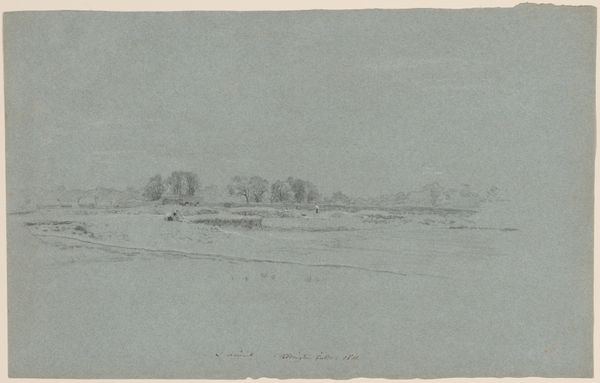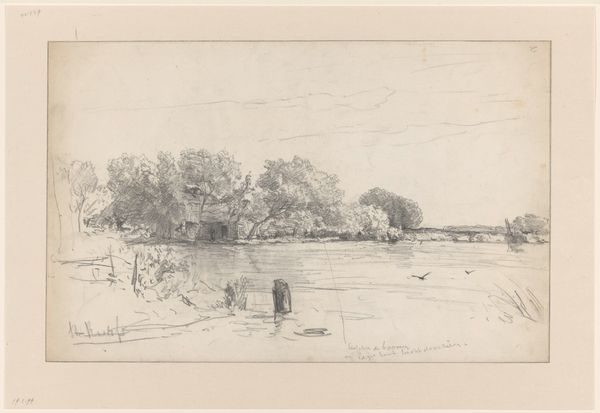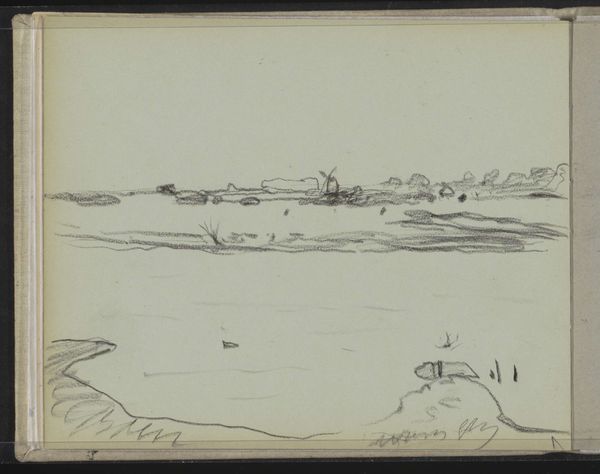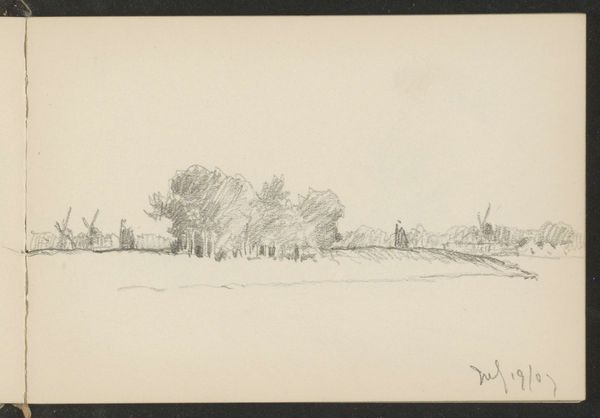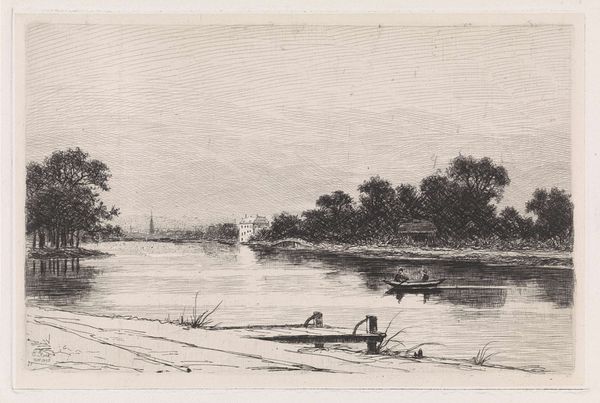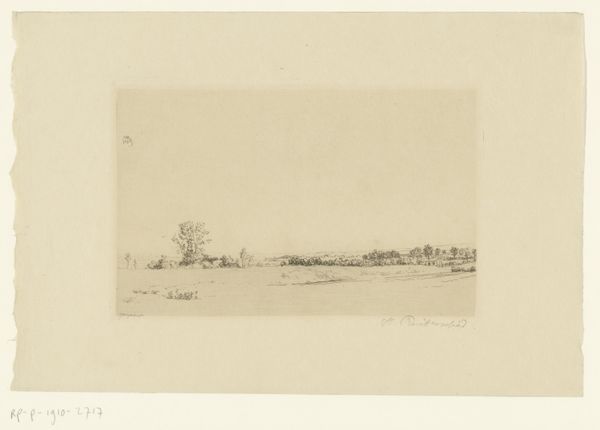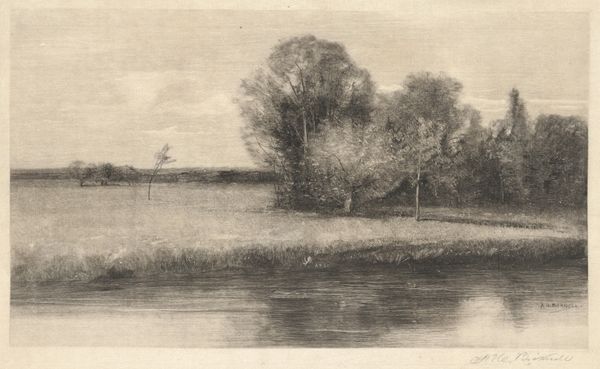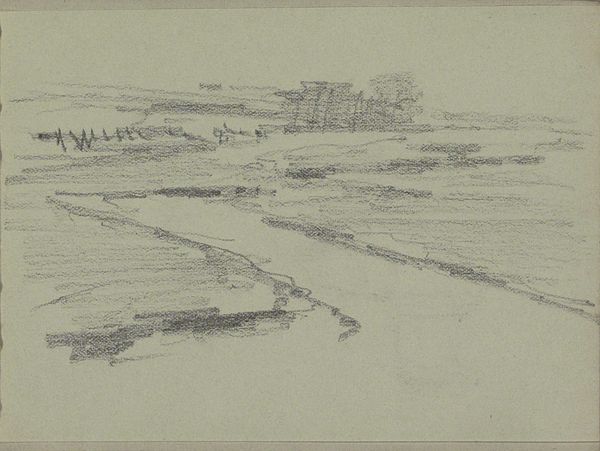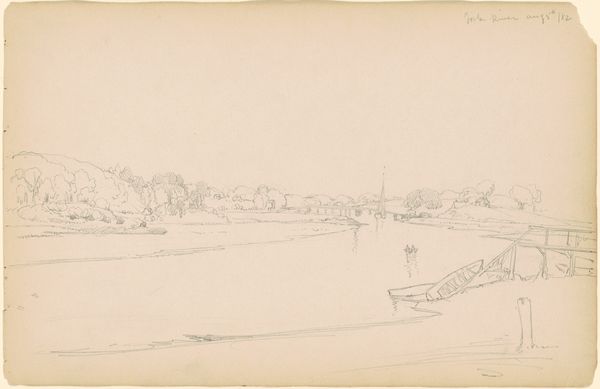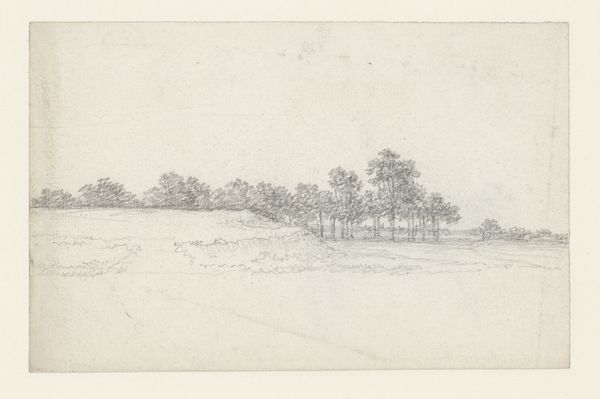
drawing, plein-air, pencil
drawing
plein-air
pencil sketch
landscape
etching
romanticism
pencil
Dimensions height 120 mm, width 158 mm
Curator: Here we have “Twee schetsen van een landschap in de verte” or “Two Sketches of a Landscape in the Distance,” made with pencil by John Linnell in 1806. It's interesting that he chose to represent essentially the same landscape twice on one sheet. What's your first impression? Editor: Spare, really spare. The two sketches feel ephemeral, almost like ghostly memories fading at the edges. There's something very peaceful about them despite the starkness of the medium. Curator: Absolutely. And notice the plainness of the pencil work itself, no virtuosic display there. The lack of shading draws attention to the very act of observation. Linnell, firmly embedded in the Romantic movement, emphasizes sketching *en plein air*. So, while a seemingly simple choice of tools and outdoor creation might appear modest, it embodies this period's artistic interest in representing the transient effects of light and atmosphere. Editor: It makes me think about who gets to depict landscapes and why. I wonder about land ownership and its representation in art during that period. How would access to land—and even artistic training—have affected what Linnell chose to portray? Curator: Precisely. His patron list would offer a telling story, as would any record of commissions or exhibitions connected with his landscape drawings. Linnell produced numerous landscape paintings and drawings, building his practice with these small, transportable sketches. These served both as preparatory works, and valuable works of art intended for his patron collectors. The choice of the location is also revealing. Linnell could explore Romantic themes of nature's grandeur within specific parameters, catering to specific audiences. Editor: The relative immediacy suggests artistic freedom; he doesn't seem constrained by conventional artistic displays of wealth or overt societal commentary. I see more a pursuit of the unvarnished essence of the land. Curator: Right. We see the land presented for land's sake. Editor: Studying this work, I think it captures a beautiful transience. Thank you, that's really expanded my understanding. Curator: A good day’s sketching! I appreciate that we could approach this work from so many sides.
Comments
No comments
Be the first to comment and join the conversation on the ultimate creative platform.
